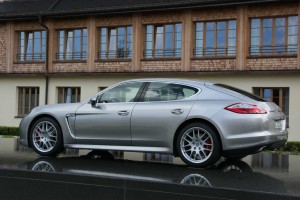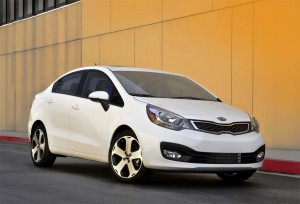
Porsche was one of the first to offer American motorists Start-Stop technology in a non-hybrid vehicle with the launch of the Panamera.
Are federal regulators inadvertently blocking widespread adoption of new technology that could significantly improve the fuel economy of most new vehicles at a relatively modest cost?
Auto industry officials complain that the Environmental Protection Agency is discouraging the industry from using Start-Stop, a technology that can briefly shut down a vehicle’s engine instead of wasting gas by idling. The feature, widely used in Europe and Japan, can boost the fuel economy of a typical passenger vehicle by as much as 5%.
The problem is that the government’s often-criticized fuel economy test cycle does not account for the advantages of Start-Stop, making it hard to justify the added cost – about $300 to $500 a vehicle – if a maker cannot show consumers that it is boosting their mileage and saving them money in the long run.
“Fuel economy is now the number one concern for American car buyers,” notes Derrick Kuzak, Ford Motor Co.’s global product chief. And that is prodding the maker – and its competitors – to adopt all sorts of new technologies that can increase a vehicle’s fuel efficiency. That includes new 7-, 8- and even 9-speed gearboxes, low rolling-resistance tires and downsized, turbocharged engines like Ford’s popular EcoBoost system.
But in a hotly competitive marketplace, warns Kuzak, a maker needs to get a return for its investment. And that means the bragging rights of showing potential buyers an improvement in fuel economy.
Yet even though automotive experts universally agree that Start-Stop routinely yields a 3% to 5% improvement in mileage – and sometimes more – manufacturers have no way to show that on the Munroney window stickers customers routinely check when they go car shopping.
So, for the moment at least, Start-Stop systems are available only on about 2% of the cars, trucks and crossovers sold in the U.S. — primarily on gas-electric vehicles, such as the Ford Fusion or Toyota Prius, where the necessary componentry is already built into the vehicle.
Experts say that today’s engines can save fuel shutting down for as little as 15 to 30 seconds rather than idling at a light or drive-up window. Start-Stop makes it simpler than having to switch a key on and off.
The basic operation is simple: when a vehicle comes to a stop and the driver steps on the brake the engine shuts down. Lift off the brake and the engine automatically fires up again.
Federal regulators have promised to examine the technology and may either modify their test procedure or come up with an algorithm that would boost the numbers for a vehicle using Start-Stop. On a typical car, the savings might add up to $100 or more annually, justifying the added expense, industry observers contend. And this way, buyers would directly understand the benefits.
Some makers have decided not to wait for the feds to act. Kia will become the first mass-market manufacturer to offer Start-Stop on a conventional, non-hybrid model. It will become available on the 2012 Kia Rio as part of a $400 “Eco” option. The base Rio will go for $14,350.
Ford, meanwhile, says it will begin offering the technology on some of its new models next year.
It’s already available on some high-line products, notably from BMW and Porsche – the latter first introducing it on the Panamera, its 4-door sports car. The maker claims the technology has proven particularly effective on its high-performance products, bumping up the fuel efficiency of the all-new Porsche 911 by as much as 15% in the European fuel economy test process.
It can take a bit of getting used to Start-Stop, feeling the engine suddenly stop at a light and then restarting, almost like magic, when it’s time to move forward. But on many models the technology operates so smoothly a motorist might not even know, especially if the radio is on, hiding the sudden silence from under the hood.
Some see Start-Stop as a sort of “bridge” between conventional gasoline or diesel-powered vehicles and all-electric products. Others contend that with the use of more limited high-tech systems – such as Start-Stop – the internal combustion engine will become so much more efficient it will become hard to justify pure battery-electric powertrains.
Research by IHS Automotive suggests Start-Stop will see a tenfold increase in use in the U.S. by 2017, to around 20%. Some experts, including Ford powertrain planners, believe the technology could actually become almost ubiquitous in another decade – especially if makers are allowed the bragging rights for the high-mileage systems.

